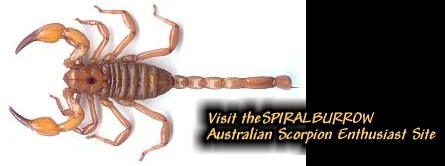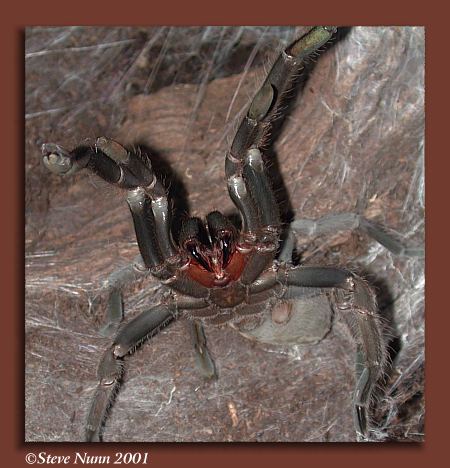
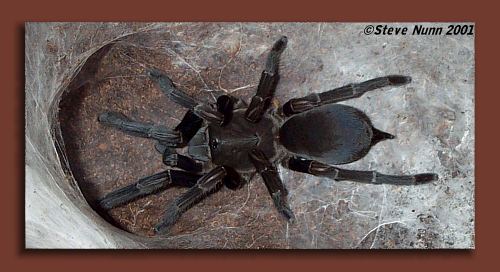

Which Tarantula?? - Identification
When you bought your spider, you were probably told, either by the private seller or by the pet shop what species your spider is. The private seller either got his information on the species from a pet shop or a collector. In the end the collector usually has a guess at what heís found based upon what he believes to be in the area. At best, its usually a half educated guess and in most cases, completely wrong.
So you can see, the chances of you actually owning what you think you do are pretty slim. A typical example of this is the spider Selenocosmia crassipes. The majority of S. crassipes sold to pet shops, usually come from Cairns. The sad part of this is the fact that the majority of these spiders arenít even in the same genus, let alone species. (I admit, the differences are very subtle, but theyíre there.) S.crassipes type locality is Rockhampton Qld and it is around this region that the species is centered. The false identification has arisen from a mistake made by C. F. Roewer in 1945 who listed the distribution as Australia and Papua New Guinea. Even though this information was incorrect it was perpetuated by Smith in 1992 and Schmidt in 1995 and as a result has led to the wrong identification of the majority of theraphosids sold to the Australian pet trade.
The bottom line is when identifying your spider, trust only an experts advice. What you can do to help with identification is obtain the location the spider came from and the date of collection. This information is paramount when identifying. Colour of the spider is practically irrelevant (this is usually why collectors are wrong.) At this point itís interesting to note that thereís a high probability that over half of Australiaís theraphosids kept in captivity are unidentified species, and as such are only identifiable down to the genus.
SPECIES LIST:
There`s some explanation involved with this list, I`ll try to clarify. There are four genera positively described in Australia. A few specimens of a fifth genus,Coremiocnemis, have been found on Australian shores and as such are tentatively included in the list ( Subfamily notes, Selenocosmiinae: in Spider Subfamilies of Australia, beta 2, Baehr, Raven, Harvey 2001).
Whilst both Selenotypus and Selenotholus contain only one described species each, there is definitely work to be done on both genera. Phlogiellus are the "spanner in the works". This genus is not endemic to Australia and I believe only two - three species have been found so far. Iím sure we'll find quite a few more in due time. As for undescribed specimens, there are many. (I have another four or five within my own collection.) Australian Selenocosmia contain two species which are not endemic: - S.strenua is also found in Papua New Guinea, as is S. stirlingi. Selenocosmia stalkeri Hirst 1907 is in fact S. stirlingi (Main 1985) and Selenocosmia vulpina Hogg 1901 is in fact S. crassipes (Main 1985) and as such, are not included in the list.
The spider you have purchased will fit into one of the five genera previously mentioned. Weíll discern between these here. (Even genus identification involves complicated tasks, but weíll give you the run down anyway.)


Figure 1. Theraphosids from the genus Phlogiellus. These spiders were only recently discovered living in the Wet Tropics of North Queensland. Prior to their discovery, spiders from this genus were sold to petshops in southern states as Selenocosmia crassipes
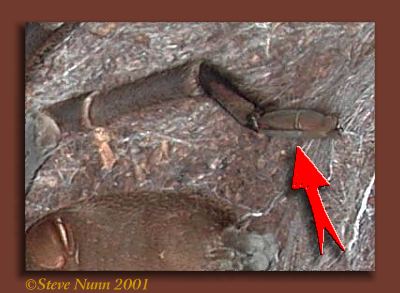
Figure 2. From this angle the bend in the tarsal section is visible.
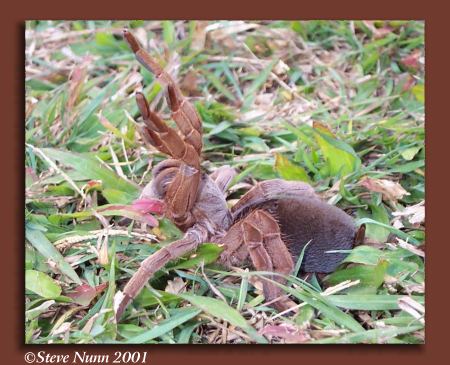
Figure 3. Selenocosmia stirlingi is Australia`s most diverse Theraphosid, inhabiting much of the arid interior of the continent.
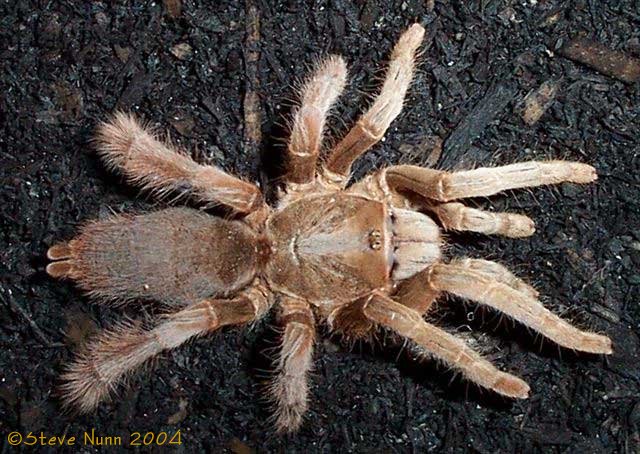
Figure 4. Seleontypus plumipes is possibly Australia`s largest Theraphosid. These are an arid zone species, preferring dry inhospitable country to the more lush, tropical coastline.
For some of you positive identifying to this stage could be difficult. If you do have a problem, contact us and we`ll help.
